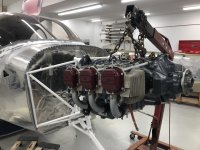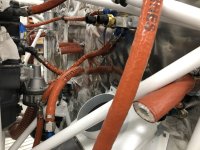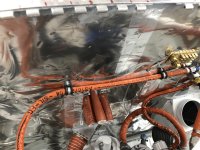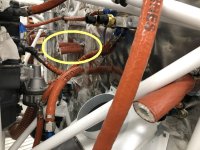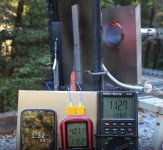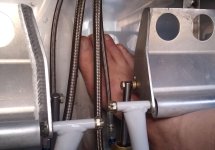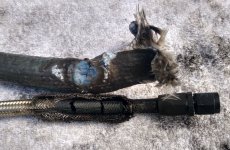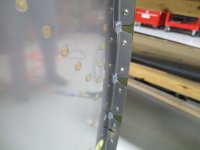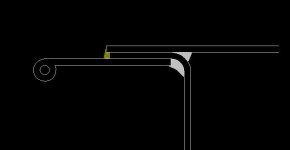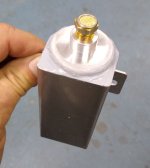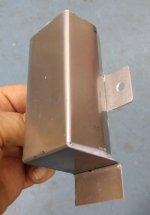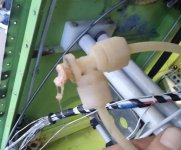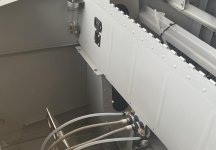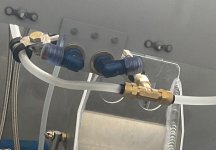A detail worth noting...
The standard brake fluid reservoir is a welded aluminum tank with an outlet nipple extending through the firewall. The plans call for a nylon fitting screwed in the nipple, then nylon lines run to the brake masters.
The photo below suggests an aluminum can with a nylon nipple might not be such a good idea. In this case the can got hot due to an engine compartment fire on the ground. Aluminum is a terrific conductor of heat, so not surprisingly, heating the can melted the nylon fitting, which then released the brake fluid into the cockpit. Kindly recall brake fluid is flammable, 83282 a bit less so (450F flash point) than 5056 (250F). Not that it matters. The nylon didn't melt until about 490F, so the fluid there is already at the flash point.
What we have here is a fire transfer device.
So what to do? The reservoir below is encased in a simple 0.016" stainless shield. There is a 1/16" insulation liner, and it's sealed with FireBarrier 2000+. It will preferably get a steel fitting on the cabin side, but I would not have any concern for an aluminum fitting, because it's not going to get hot enough to be a concern, given both the can and the firewall itself are insulated on the hot side. Plumbing will be steel braided nylon, not bare nyloseal or similar.
Let's build better airplanes...
.




